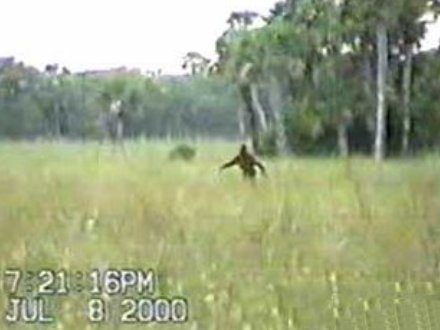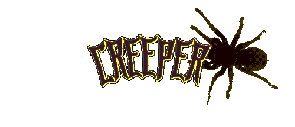Post by Ceratodromeus on Nov 5, 2016 0:14:52 GMT 5

Description
"Bigfoot (also known as Sasquatch) is the name given to a mythological simian, ape, or hominid-like creature that is said to inhabit forests, mainly in the Pacific Northwest. In American folklore, Bigfoot is usually described as a large, hairy, bipedal humanoid. The term sasquatch is an Anglicized derivative of the Halkomelem word sásq'ets.
cientists discount the existence of Bigfoot and consider it to be a combination of folklore, misidentification, and hoax, rather than a living animal, because of the lack of physical evidence and the large numbers of creatures that would be necessary to maintain a breeding population. Occasional new reports of sightings sustain a small group of self-described investigators. Most reports of sightings are attributed to being various animals, particularly black bears.

Bigfoot is described as a large, hairy, muscular, bipedal ape-like creature, roughly 2–3 metres (6 ft 7 in–9 ft 10 in) covered in hair described as black, dark brown, or dark reddish.
Individuals claiming to have seen Bigfoot described large eyes, a pronounced brow ridge, and a large, low-set forehead; the top of the head has been described as rounded and crested, similar to the sagittal crest of the male gorilla, with a strong, unpleasant smell. The enormous footprints for which it is named are claimed to be as large as 24 inches (60 cm) long and 8 inches (20 cm) wide.Some footprint casts have also contained claw marks, making it likely that they came from known animals, such as bears, which have five toes and claws. Proponents claim that Bigfoot is omnivorous and mainly nocturnal.
History
Wild men stories are found among the indigenous peoples of the Pacific Northwest Coast. Grover Krantz writes, "Native stories that can confidently be related to the sasquatch occur throughout the Pacific Northwest. Their distribution corresponds to the area where White Man accounts are concentrated." According to David Daegling, the legends existed before there was a single name for the creature; and that they differed in their details both regionally and between families in the same community; and that similar stories of wild men are found on every continent except Antarctica. Ecologist Robert Pyle argues that most cultures have human-like giants in their folk history: "We have this need for some larger-than-life creature." Each language had its own name for the creature featured in the local version of such legends. Many names meant something along the lines of "wild man" or "hairy man", although other names described common actions it was said to perform, e.g., eating clams.
Members of the Lummi tell tales about Ts'emekwes, the local version of Bigfoot. The stories are similar to each other in the general descriptions of Ts'emekwes, but details about the creature's diet and activities differed between family stories.
Some regional versions contained more nefarious creatures. The stiyaha or kwi-kwiyai were a nocturnal race that children were told not to say the names of lest the monsters hear and come to carry off a person—sometimes to be killed. In 1847, Paul Kane reported stories by the native people about skoocooms: a race of cannibalistic wildmen living on the peak of Mount St. Helens.
Less-menacing versions exist, such as the one recorded by Reverend Elkanah Walker. In 1840, Walker, a Protestant missionary, recorded stories of giants among the Native Americans living near present-day Spokane, Washington. The Indians said that these giants lived on and around the peaks of nearby mountains and stole salmon from the fishermen's nets.
Local stories were compiled by Indian Agent J. W. Burns in a series of Canadian newspaper articles in the 1920s recounting stories told to him by the Sts'Ailes people of Chehalis and others. The Sts'Ailes maintain, as do other indigenous peoples of the region, that the Sasquatch are very real and take great umbrage when it is suggested that they are legendary. According to Sts'Ailes eyewitness accounts, the Sasquatch prefer to avoid white men, and speak the "Douglas language", i.e. Ucwalmicwts, the language of the people at Port Douglas, British Columbia at the head of Harrison Lake. It was Burns who first borrowed the term Sasquatch from the Halkomelem sásq'ets (IPA: [ˈsæsqʼəts])and used it in his articles to describe a hypothetical single type of creature reflected in the stories.
A story told to Charles Hill-Tout by Chief Mischelle of the Nlaka'pamux at Lytton, British Columbia in 1898 gives another Salishan variant of the name, meaning "the benign-faced-one".
Each language had its own name for the local version. Many names meant something along the lines of "wild man" or "hairy man" although other names described common actions it was said to perform, e.g., eating clams."
en.wikipedia.org/wiki/Bigfoot
Resources for research purposes









